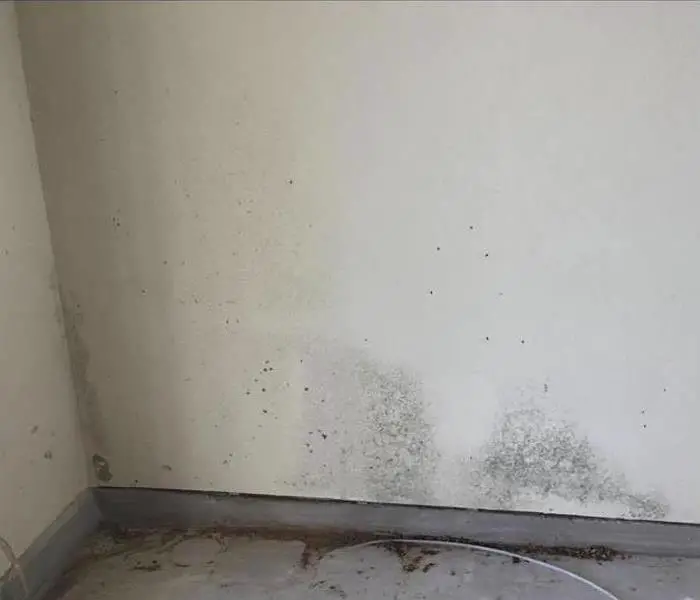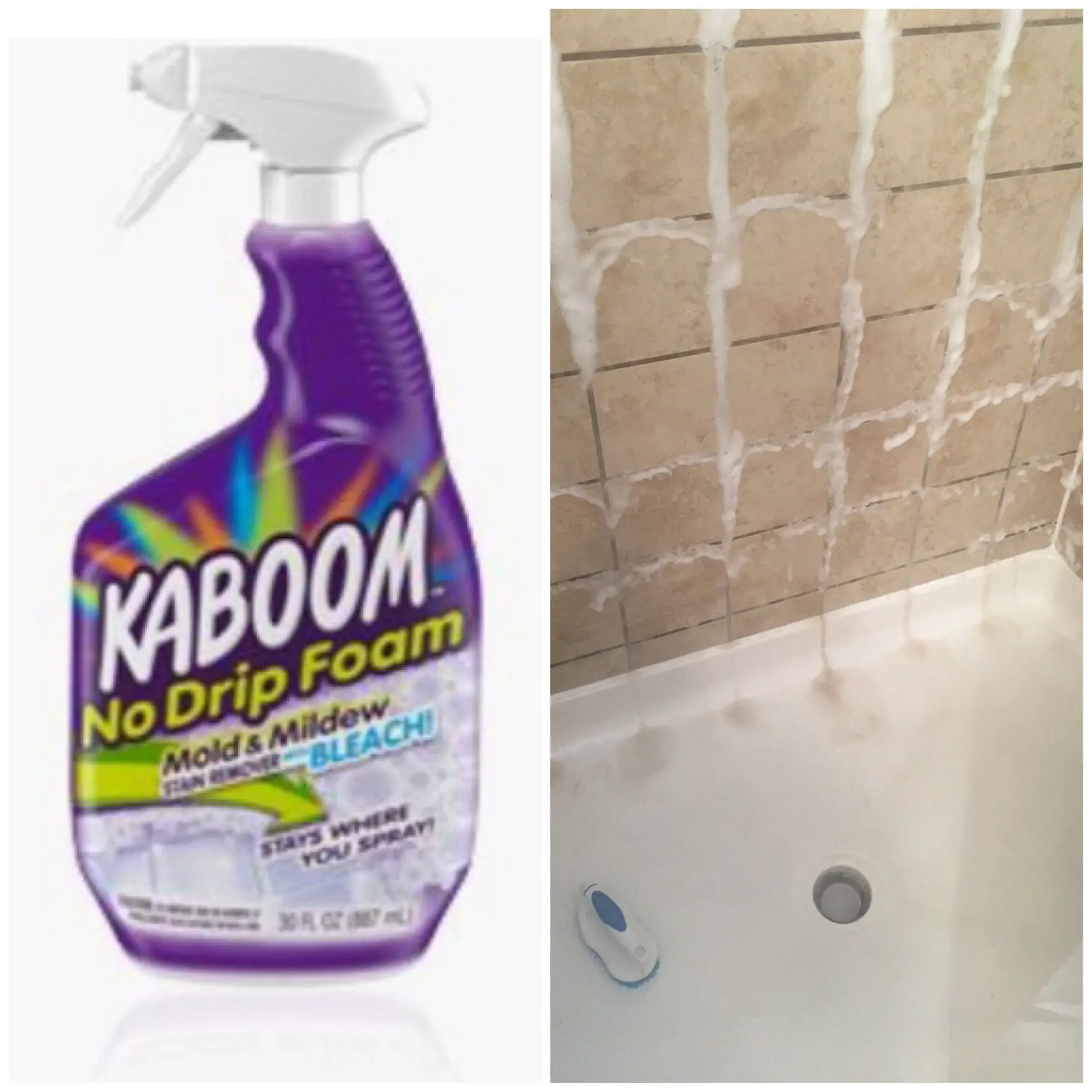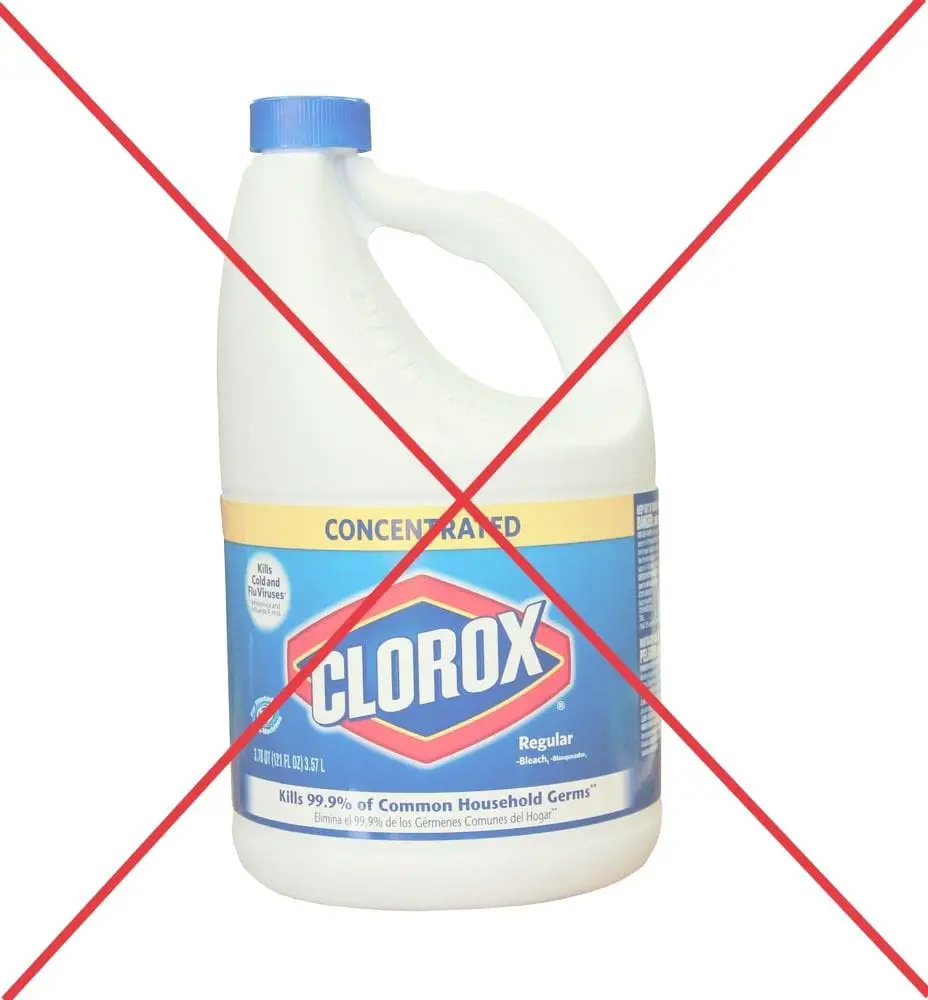Bleach Is Ineffective In The Long Run
In the long run, bleach only helps you mask the mold for a short period. After you have applied bleach to a porous surface, the molds dark green color is removed, and your wall returns to its bright colors. However, the roots of the molds which have reached deep into the insides continue to grow. Also, bleach does not stop harmful mold spores from spreading within the house.
In the long run, you should call an expert to look into any mold problem you have. Cleaning mold is not enough to eliminate their harmful effects because, even when molds are dead, they can still produce toxic spores. Molds have to be removed entirely, and there are different procedures for doing this depending on the type of surface on which the mold has occurred. Air quality also needs to be returned to healthy levels. To achieve these, you should let a certified mold remediation specialist handle any mold problem you have in your home.
How To Remove Mold From Drywall
Removing mold from drywall can be tricky because if drywall gets too wet, it is ruined. In fact, its often easier to cut out the infected section of drywall and replace it, rather than trying to treat the mold directly. If the drywall feels soft, its beyond saving. However if you do want to clean the drywall without removing it, heres what to do.
Youll need:
Method:
Step 1: Brush the mold off the drywall using the scrubbing brush. Try to remove as much as possible without getting the wall wet.
Step 2: Make a 50/50 solution of white vinegar and hydrogen peroxide. Spray it onto the area until it is damp, but not soaked.
Step 3: Wait 10 minutes then use a medium-bristled brush to clean the wall using circular motions. Dont scrub too hard or youll damage the drywall.
Step 4: Wipe down the wall using household disinfectant wipes.
Step 5: Allow the wall to dry. In high-humidity environments, set up a box fan directed toward the wall to dry it as quickly as possible.
If the drywall is stained when dry, use a primer or stain block before repainting. Consider a mold-resistant paint to provide extra protection, and reduce humidity in the room to stop mold from returning.
Pro Tip: Learn How To Remove Humidity from Your Furniture and Textiles for Proper Moisture Control
Cleaning Mold With Bleach
Always use protective gear when cleaning mold.
According to conventional wisdom, bleach kills mold growth. However, this is somewhat of a myth as bleach only kills the mold on the surface without affecting the membrane underneath. You need to kill and remove this underlying membrane to effectively remove the mold growth and prevent it from returning. Bleach cleaners cannot kill this membrane because its chemical structure prevents it from penetrating porous surfaces. This causes the mold membranes to move deeper into the affected surface to hide from the bleach. You should only use bleach to remove small amounts of mold that have formed on non-porous surfaces.
Another problem with using bleach is that it can actually multiply the mold growth. When bleach is introduced to mold colonies, the mold recognizes the bleach as a threat and reacts. Mold can actually use bleach as a food source once it has been exposed which will cause the mold to grow back faster and stronger. Even the EPA advises against using bleach for removing mold. Fortunately, there is another household item that can kill mold.
You May Like: What Are The Symptoms Of Inhaling Black Mold
What Is The Best Mold Killer
- Best Overall: RMR Brands RMR-141 Disinfectant and Cleaner. …
- Best Preventative: Mold Armor Rapid Clean Remediation. …
- Best Natural: Benefect Botanical Decon 30 Disinfectant Cleaner. …
- Best for Wood: Wet and Forget Moss, Mold, Mildew, and Algae Stain Remover. …
- Best for Fabrics: Concrobium Mold Control Aerosol.
Where Not To Use Hydrogen Peroxide To Remove Mold And Mildew

As we mentioned, hydrogen peroxide is unlikely to inhibit mold growth on porous surfaces like fabrics and wood. If you notice mold on bath rugs, wooden walls, or other porous surfaces, the object or surface will need to be safely discarded according to your local disposal rules.
Hydrogen peroxide has the potential to bleach some types of natural fabrics like wool.
Hydrogen peroxide is generally safe on solid surfaces and even most synthetic fabrics. To avoid accidental bleaching, make sure to clean off all the hydrogen peroxide once you finish cleaning the mold.
When cleaning mold in your home, its a good idea to wear protective gloves, goggles, and a mask to prevent coming into contact with mold spores.
Heres how you can clean mold from solid surfaces using hydrogen peroxide:
Hydrogen peroxide is just one of many household ingredients you can use to clean mold. Using vinegar is another effective way to clean mold in your home.
However, its important not to mix hydrogen peroxide and vinegar together.
Recommended Reading: How To Stop Black Mold
How To Clean Mold With Bleach
Use bleach to get rid of mold on nonporous surfaces as follows:
This method works on all nonporous surfaces, including basement walls, roofs, and floors. Not drying the surface cleaned of mold will only encourage the mold to regrow. Also, throw away all the items that came into contact with the mold, such as the brush and gloves.
How To Use Borax To Kill Mold
Borax is a natural cleaning product with many advantages. While it is toxic if you swallow it, it does not emit chemicals or dangerous fumes like other mold killers. To remove mold, borax needs to be combined with with water. Borax is also a natural mold inhibitor.
How to Kill Mold Using Borax
Recommended Reading: How Much Does It Cost To Treat Black Mold
Hydrogen Peroxide Is A Non
If you want to obtain a similar result against black mold as you would using bleach, you can use hydrogen peroxide. In an empty spray bottle, combine equal parts hydrogen peroxide and water. Spray the mixture onto the mold, and allow it to sit for 15 minutes. Then, use a sponge to clean the surface and remove any leftover mixture, and youre done!
Mold Damages To Your Property And Health
Mold eats the materials it grows on,breaks down the material bit by bit. Its presence can result in extensivestructural property damage. Mold is also a threat to spread to new areas bydispersing its spores.
Mold produces allergens, irritants andtoxins. Another source of irritation is microbial volatile organic compounds ormVOCs. These compounds are produced via fungal metabolism and are releaseddirectly into the air, often giving off strong and unpleasant odor. So whileproperty damage is a major concern, the possible health effects for those whoare exposed are a bigger cause of alarm. Health risks associated with airbornemold spores exposure range from mild to severe including the fungal allergy,respiratory infections, eye and nose irritations, throat and skin irritations,mood swings, headaches, memory loss and worse wheezing and asthma attacks.
Don’t Miss: How To Remove Mold From Ceramic Tile Grout
Baking Soda: A Great Cleaning Powder
If you want to remove black mold relatively quickly andin a non-toxic way, all you need is baking soda and water. Mix in two tablespoons of baking soda with two cups of water, until the baking soda is completely dissolved. Soak the black mold in the mixture, and allow it to sit for 15-20 minutes.
Then, start scrubbing until the mold is completely removed. You might have to repeat the process a second time if the mold is deeply rooted in the surface.
Get Rid Of Mold Using Ammonia
Ammonia can be used to create a more eco-friendly solution for mold removal than other chemical-based products. However, they can be toxic to humans similar to bleach so caution is absolutely necessary during use. And like bleach, ammonia cannot penetrate a porous surface but is excellent for tiles, glass, and countertops. The ammonia solution should contain 50% clear ammonia and 50% water. It is best to use a spray bottle instead of applying it directly using a rag. Spray onto the affected surface and let it sit for a few hours before you start scrubing. For safety, throw away the clothes you use to clear out to mold.
Read Also: Does Color Safe Bleach Kill Mold
Read Also: How To Get Rid Of Mold In Your Dishwasher
Does Bleach Kill Mould
Experts we spoke to say there’s evidence that bleach can kill fungi, but it needs to be at a 10% concentration to work.
Even at a higher potency, bleach won’t penetrate porous materials, so if the mould is growing on plaster, grout or wood, it will kill mould on the surface, but not below it.
Also, several experts told us that bleach can be a masking agent. Bleach takes the colour, or melanin, out of fungi, making it invisible. You can’t see it anymore, so you think the bleach has done its job, when that’s not necessarily the case.
Strong bleach is also harmful to grout and tiles as it erodes and corrodes the surfaces, making them more porous, which in turn makes them more vulnerable to further fungi growth.
Warning: Never mix bleach and vinegar together it creates toxic chlorine gas.
Take Preventive Measures Against Mold

Removing mold is never fun the easiest way would be to prevent the mold from appearing in the first place. As you may know, humidity is the main factor that helps mold appear. So, all you need to do is to keep it at a minimum.
An ideal home should have between 40% to 50% humidity. So, if you just removed the mold in your home and want to prevent it from forming again, you can invest in a dehumidifier.
Dehumidifiers are amazing they will not only help with humidity, but also improve the quality of air in your home and remove bad odors. All you need to do is set the humidity levels you want and start the device. The dehumidifier will run in the background quietly and you can go about your day without worrying about it.
Also Check: Can Mold Allergy Cause Fever
Does Bleach Make Your Mold Worse
In some cases, yes, it can make your mold much worse.
This is because bleach contains water and when you clean a porous material with bleach, chemicals like chlorine evaporate quickly leaving more moisture behind, which helps invisible mold to thrive.
Further, mold can communicate with each other, so when you apply bleach on a porous surface, mold will actually move deeper into the surface to avoid the chemicals, which is horrible, as it can be very hard to deal with even if you hired professionals.
Does Bleach Kill Mold
The short answer is yes, bleach can be very effective at destroying living organisms such as mold, germs, and bacteria.
However, we dont really recommend you to use bleach for mold clean-up.
This is because mold can grow deep inside walls and surfaces and although bleach is very good at killing mold, it cant penetrate porous materials.
In other words, bleach will only kill mold at the surface and as a result, the invisible mold that lives deep inside your walls will keep growing, damaging your home infrastructure and risking your familys health.
Recommended Reading: Can I Not Pay Rent If I Have Mold
How To Kill Mold With Baking Soda
Also Check: How To Get Mold Out Of Walls
How To Prevent Mold In The Future
Panic over, the mold is gone, but you dont want a recurrence. Mold will occur wherever there is water damage, such as leaks or flooding.
When water damage occurs, make sure to fix it promptly and dry thoroughly after fixing it. Here are some recommendations that you can follow to minimize mold from occurring:
- Avoid humidity: Keep the humidity as low as possible all day long. You can do this by using a dehumidifier or an air conditioner.
- No carpets in wet areas: Dont put down carpets or many rugs in rooms or areas where there is excessive water usage: bathrooms, laundry room, basements.
- Ventilate: Ensure theres good ventilation in your house. Make sure vents are installed in the kitchen and bathroom.
- Fix water leaks: If you notice water leaks in walls, pipes, roofs, or even plant pots, try to fix them immediately or call a maintenance company. Dry the affected area directly after fixing the problem.
Also Check: Can You Remove Mold With Bleach
Removing Mold From Your Home
If you notice a small amount of mold growing somewhere in your home, vinegar is the best option to remove it. The vinegar will penetrate the porous surface and remove the underlying membrane as well as the mold growth on the surface. However, you should only use this method if there is a small amount of mold in your home. Attempting to remove significant mold growth yourself is ineffective and dangerous.
If the mold growth is too severe or widespread, you must call a mold remediation professional immediately. Removing small amounts of mold with vinegar is safe and effective but any substantial amount requires specialized equipment and training. Mold removal professionals will ensure all mold in your home is removed safely and effectively.
Cleaning Mould With Bleach Safely
Whichever antifungal agent you choose to help tackle mould in your home, itâs important to stay safe while cleaning. Keep your windows and doors open when using bleach and vinegar to improve airflow and reduce fumes, and always wear gloves and any other necessary protective clothing as these cleaning solutions can irritate the skin. And always keep children and pets away from the area until itâs safe.
This article has focused on answering âdoes bleach kill bacteria and virusesâ and âhow doesbleach kill virusesâ, as well as arming you with the tools for cleaning mould with bleach on household surfaces. For information on how to remove mould and mildew on clothing, check out our guide.
Originally published
You May Like: How Long Do Mold Symptoms Last
Can Bleach Kill Mold
Is is difficult to remove kill mold and a challenge for any homeowner. Some molds are highly toxic, some are indicative of intense dampness in the home, but all molds are unsightly. You should remove them as soon as possible. Mold can also destroy the surfaces it grows on. It can lead to structural damage of the home and potentially cause health problems for people who suffer from respiratory issues or weakened immune systems. Many homeowners turn to bleach to help get rid of mold, but is this an effective method? This blog will explore whether bleach can get rid of mold, the risks associated with this removal, and whether there are better alternatives to this type of removal.
Can Damage Surfaces And Fabrics

Using bleach for cleaning mold can result in damaged surfaces, curtains or clothing because the bleach cannot distinguish between different types of materials. Bleach will deteriorate many kinds of common household items like counter tops, carpets, drapes etc.
The strong chemical compounds that make up chlorine bleach also cause deterioration over time on various building components including metals, plastics, rubber gaskets and other seals found around doors and windows. These are necessary parts of buildings . This means that, eventually, everything is at risk from exposure to concentrated amounts of chemicals such as bleach even when used sparingly.
Also Check: Where To Buy Bath Bomb Molds
Read Also: How To Clean Black Mold Out Of Air Conditioner
